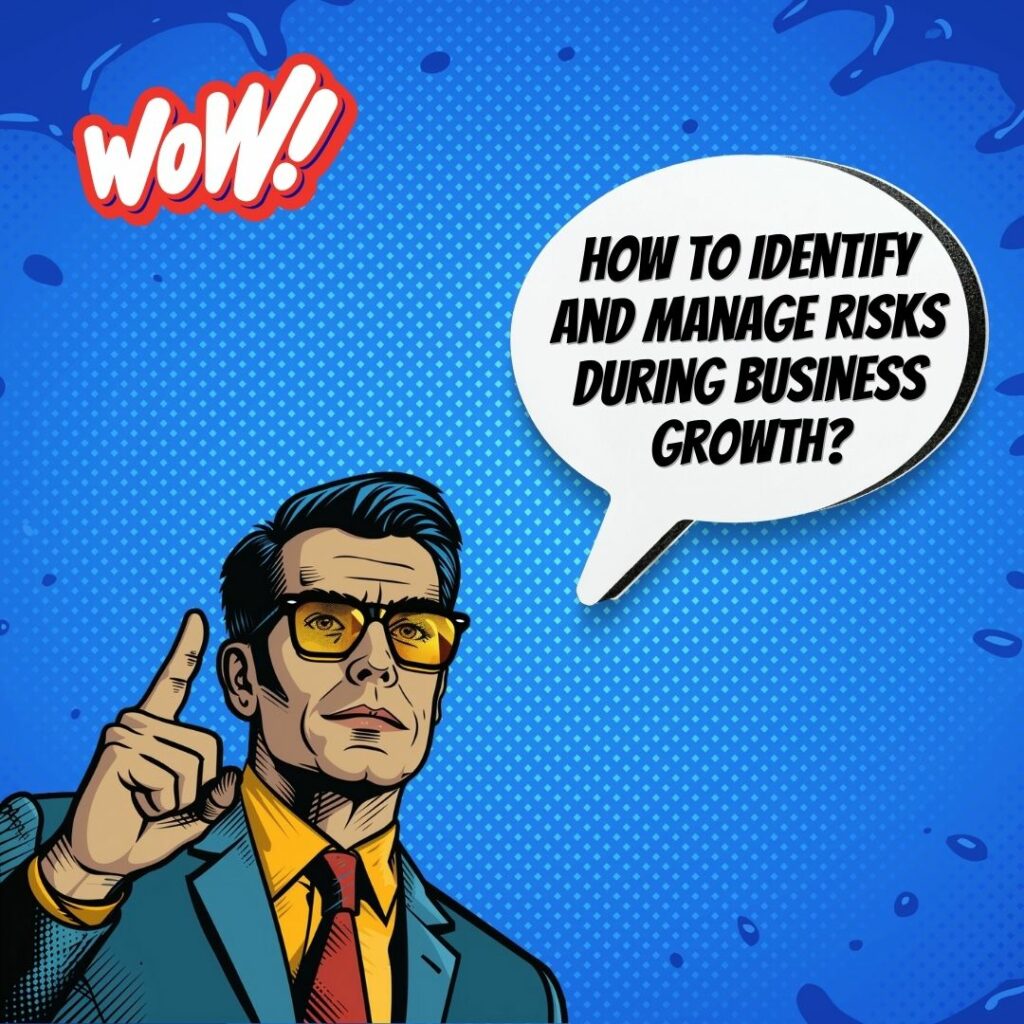Key Takeaways
✅ Control Spending: In the whirlwind of rapid business expansion, it's easy for spending to spiral. A staggering 29% of startups fail due to running out of cash. Controlling expenditure, through meticulous planning and discerning between essential and non-essential spending, is your safeguard against this pitfall. Embrace tools and techniques that forecast financial needs and prioritize investments wisely.
✅ Set Realistic Goals: Overambitious targets can backfire, especially when your business is scaling. An eye-opening study shows that only 8% of individuals achieve their ambitious goals, suggesting the need for realism in business too. Setting achievable sales and marketing objectives, aligned with a well-thought-out plan for resource allocation, ensures your growth doesn’t devolve into chaos. This approach not only helps in risk mitigation but also in aligning your team towards attainable achievements.
✅ Plan Staffing Strategically: Rapid expansion demands more from your team, and how you manage this can make or break your growth trajectory. With industry turnover rates averaging around 57%, getting your staffing strategy right is non-negotiable. This includes hiring skilled professionals, investing in training, and fostering a workplace culture that values feedback and promotes retention. Engage HR experts early in your planning to ensure you're prepared to scale your team responsibly and effectively.
 Introduction
Introduction
Is your business ready to grow, but you’re worried about the risks? Managing the Risinfo of Business Growth is crucial for long-term success. In a world where 50% of businesses don't survive past five years, understanding and navigating growth challenges is not just wise—it's essential.
Growth is exciting, but without careful planning, it can quickly become a company’s downfall. From overspending to setting unrealistic goals, the pathway to expansion is fraught with potential pitfalls. This article sheds light on modern trends and innovative strategies that help businesses not only survive but thrive by maximizing revenue and ensuring sustainable expansion. With actionable insights and groundbreaking information, prepare to turn the risks of growth into stepping stones for success.
Top Statistics
| Statistic | Insight |
|---|---|
| 41% of organizations reported experiencing three or more critical risk events in the last 12 months. | This highlights the frequency of risks organizations face, showing the necessity for robust risk management strategies. |
| 65% of senior finance leaders agree that the volume and complexity of corporate risks have changed “mostly” or “extensively” over the last five years. | It underlines the dynamic nature of risks today, necessitating continuous assessment and adaptation of risk management practices. |
| Cybercrime is one of the top five risks by most risk executives (58% and increasing). | Emphasizes the growing concern and need for companies to strengthen their cybersecurity measures in the face of evolving digital threats. |
| 63% of executives believe that their organization’s risk management processes provide “no” or “minimal” competitive advantage. | This statistic is a call to action for businesses to reevaluate and enhance their risk management to turn it into a strategic asset. |
| The organizations with an IR team that tested an IR plan saved $2.66 million in breach costs on average versus those with no IR team and IR plan testing — a 58% cost savings. | Demonstrates the direct financial benefit of being proactive with incident response planning and regular testing. |
Understanding the Risks of Business Growth
When a business starts to grow, it's like a plant stretching towards the sun - exciting, but not without its dangers. Growth can push a company into new territories or bigger markets, but it's easy to stumble without a solid plan. Managing risks is critical to avoid falling into traps that could stifle or even reverse this growth. These dangers aren't just about losing money but can impact a company's reputation, its operations, and its strategic future. In short, understanding and planning for the risks of growing too fast or in the wrong way are just as important as the growth itself.
Identifying Key Risks
As businesses expand, they face a mix of strategic, operational, financial, and reputational risks. Each one of these can act like a hidden pitfall that can trip up an unwary business. Strategic risks might come from not really understanding the new market or from choosing the wrong time to grow. Operational risks could involve the challenge of scaling up production or services smoothly. Financial risks are about the money - does the business have enough, or could new expenses or failures hurt it? And reputational risks are about how the business's expansion might look to the outside world and its own employees. By looking at real-life examples, companies can learn how to spot these risks early.
Assessing and Prioritizing Risks
Not all risks are created equal. Some might pose a minor inconvenience, while others could threaten the business's very survival. Tools like risk matrices and SWOT analysis (Strengths, Weaknesses, Opportunities, Threats) help businesses figure out which dangers need immediate attention and which can be monitored over time. This process isn't just a one-time task but an ongoing effort to weigh the likelihood of different risks against their potential impact, ensuring that the business can focus its energy and resources where they're needed most.
Developing a Risk Management Strategy
Crafting a risk management strategy is all about finding balance. It means developing plans to mitigate, transfer, or accept risks depending on their nature and the company's capacity to handle them. For instance, some risks might be reduced through better planning and processes, others might be insured against, and some might be seen as acceptable parts of trying new things. The key is to have a strategy that's flexible and responsive, learning from both the industry's best practices and the company's own experiences.
Implementing Risk Management Practices
Putting a risk management plan into action involves more than just paperwork; it's about building a culture that understands and respects the process. This means establishing clear policies and procedures, training staff to recognize and respond to risks, and ensuring that everyone knows who is responsible for what. Communication is crucial, both to prevent risks and to manage them when they occur. Effective risk management is woven into the fabric of the company, part of every decision and process.
Monitoring and Reviewing Risk Management
Like steering a ship through changing seas, risk management requires constant attention and adjustment. Regular risk assessments and performance reviews help a business stay on course, allowing it to adapt to both internal and external changes. This isn't just about looking for what's gone wrong but also celebrating what's going right and learning from both. By making risk management a dynamic part of its operations, a business can not just survive but thrive, turning potential threats into opportunities for further growth.
AI Marketing Engineers Recommendation
Recommendation 1: Diversify Your Revenue Streams: As exciting as rapid growth can be, relying heavily on a single product, service, or customer can be precarious. A 2020 Harvard Business Review study emphasized the resilience of diversified businesses during economic downturns. By spreading your bets, you not only minimize the risk of a catastrophic blow should one area falter but also open up multiple channels for growth. Explore extending your product line, entering new markets, or even adopting a subscription model to ensure a more stable revenue flow.
Recommendation 2: Leverage Data Analytics for Predictive Planning: Key to Managing the Risks of Business Growth is knowing not just where you stand, but where you could be heading. With the explosion of data analytics tools in recent years, businesses now have the means to forecast future trends, demand, and potential challenges with remarkable accuracy. By analyzing past and current data, companies can identify growth patterns, predict customer behavior, and adjust their strategies in real time. This proactive approach enables better resource allocation, reduces the fear of the unknown, and enhances decision-making processes.
Recommendation 3: Implement Robust Risk Management Software: In this digital age, technology offers solutions to almost every challenge, including risk management. Tools like LogicManager or Riskwatch International are designed to help businesses anticipate, identify, and mitigate the risks associated with growth. These platforms allow for continuous risk assessment, ensuring you're always a step ahead. They offer benefits such as improved regulatory compliance, enhanced operational efficiency, and the preservation of corporate reputation. Investing in such software is investing in peace of mind, allowing you to focus on steering your business towards its goals without being blindsided by unexpected trials.
Relevant Links
- Revolutionizing Digital Marketing with Advanced AI
- Mastering Campaign Goals for Impact
- Unlocking Market Growth: Strategies That Work
- Transform Your Marketing with Personalization
- Boosting Ad Design for Engagement
Conclusion
In today's rapidly evolving business landscape, managing the risks of business growth is not just advisable; it's essential. This article has journeyed through the intricate pathways starting from understanding these risks, identifying them clearly, to assessing, prioritizing, and implementing dynamic strategies to mitigate them. The discussions highlighted the multifaceted nature of risks—be it strategic, operational, financial, or reputational—and underscored the critical importance of developing a robust risk management strategy.
Reflecting on the key takeaways, it's clear that recognizing and prioritizing risks using tools like risk matrices and SWOT analysis are steps that cannot be overlooked. Equally important is the adoption of comprehensive risk management practices tailored to an organization's unique landscape, coupled with continuous monitoring and review to ensure these strategies remain effective as the business grows and evolves.
As businesses aim for the stars in growth, the gravity of risks keeps them tethered to reality, making risk management not just a shield but a gateway to sustainable development and success. The implementation of risk management practices calls for a culture that embraces proactive assessment and agile response to potential pitfalls, ensuring that growth is not only achieved but maintained.
Now, as we stand at the crossroads of ambition and prudence, the article invites leaders and entrepreneurs to reflect: How well-prepared is your business to navigate the complexities of growth while safeguarding its core against potential risks? The answer to this question may very well determine the trajectory of your business's success in the volatile journey of growth.
FAQs
Question 1: What is risk management, and why is it important for businesses?
Answer: Risk management is the process of identifying, assessing, and prioritizing potential risks that could impact a business. It helps develop strategies to mitigate those risks and protect the business from financial losses, legal issues, and reputational damage.
Question 2: What are the most common risks businesses face?
Answer: Businesses face various risks, including property damage, liability claims, cybersecurity threats, employee injuries, and natural disasters. Identifying these risks is the first step in developing a comprehensive risk management plan.
Question 3: How can I assess the risks specific to my business?
Answer: Conducting a risk assessment involves identifying potential risks, evaluating their likelihood and potential impact, and determining the best strategies to manage them. This process can be assisted by experts like Gallagher Select.
Question 4: What insurance coverage do businesses need?
Answer: Businesses typically need General Liability insurance, Property insurance, and Professional Liability insurance. Cyber insurance is also increasingly important due to the rise of digital crime.
Question 5: How can I protect my business from cybersecurity threats?
Answer: Implement robust security measures like firewalls, encryption, and employee training to protect against data breaches, ransomware attacks, and other cyber threats. Cyber insurance can also provide financial protection.
Question 6: What should I include in my business continuity plan?
Answer: A business continuity plan outlines steps to be taken in the event of a disruption, such as a natural disaster or major system failure. It should include emergency contact information, backup procedures, and a communication plan to ensure quick recovery and resumption of operations.
Question 7: How can I minimize the risk of employee injuries?
Answer: Create a safe work environment by conducting regular safety training, implementing proper safety protocols, and providing necessary personal protective equipment (PPE) to reduce workplace accidents and injuries.
Question 8: What legal and regulatory risks should I be aware of?
Answer: Businesses must comply with various legal and regulatory requirements, such as employment laws, data protection regulations, and industry-specific regulations. Staying informed and seeking legal advice when needed can help avoid costly penalties and legal disputes.
Question 9: How often should I review and update my risk management plan?
Answer: Risk management is an ongoing process. Regularly review and update your risk management plan to ensure it remains relevant and effective as your business evolves. Aim to review your plan at least annually or whenever significant changes occur.
Question 10: How can I foster an organizational culture that prioritizes risk awareness and proactive risk management measures?
Answer: Communicate risk management procedures and policies effectively and ensure they are understood at all levels within the organization. The board of directors plays a crucial role in setting a risk-aware corporate culture, which should be applied uniformly throughout the company.
Academic References
- Langfield-Smith, K., & Smith, D. (2003). Management control systems and trust in outsourcing relationships. Management Accounting Research, 14(3), 281-307. This study emphasizes the significant role of management control systems in outsourcing relationships, highlighting the importance of trust and the impact on risk management strategies within Small and Medium-Sized Enterprises (SMEs).
- Tchankova, L. (2002). Risk identification – basic stage in risk management. Environmental Management and Health, 13(3), 290-297. Offering a foundational framework for risk management, this article discusses the critical stage of risk identification, underlining robust frameworks for effective communication and transparency in risk mitigation practices.
- Aven, T. (2011). On the new ISO guide on risk management terminology. Reliability Engineering & System Safety, 96(7), 719-726. In this article, the contribution to the business performance through risk management is analyzed, with a focus on the systematic process of identifying, assessing, and tackling threats in support of enhanced business outcomes.
- Bremser, W. G., & Barsky, N. P. (2004). Utilizing the balanced scorecard for R&D performance measurement. R&D Management, 34(3), 229-238. This piece explores how risk management can foster innovation and growth by setting boundaries for risk communication, thereby encouraging entrepreneurial activity within firms through effective internal controls.
- PricewaterhouseCoopers. (2020). PwC’s Pulse Survey: Managing business risks. This survey reflects the attitudes and strategies of 83% of companies focusing on growth amidst economic uncertainties, underscoring the importance of strategic risk management in securing stakeholder confidence and achieving superior business results.












